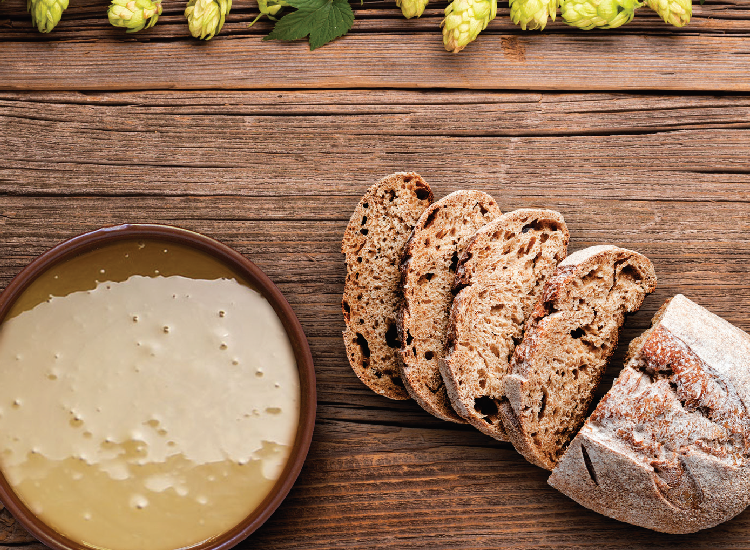Bakery - Pastry
MALTED DOUGH – The natural improver for breads

Definition
Malted dough (in other terminology we find it as malzstück, malzkochstück, malzteig, aromastück) is a preparation dough that is used in various bakery goods.
Preparation
It is made from any type of flour (usually rye flour is used, sometimes whole wheat flour from hard wheat or dinkel), a small amount of active malt and water, while it does not contain any yeast, sourdough or other baking agents.
For its preparation, the flour is mixed with twice to three times the amount of water (depending on the type of flour we use) and 3-5% active (diastatic) malt, while stirred for 3 hours under heating at 60-650C.
This can be done with a thermomixer when it comes to small / laboratory productions, or in a professional boiler with stirring and adjustable temperature.
The batter is initially very liquid and light in colour. The heating subsequently causes intense hydration and swelling of the starch while it begins to coagulate since we have gelatinization.
At the same time, it begins to develop a slightly sweet flavour and darkens to a brownish-grey colour as the starch is degraded enzymatically, producing simple sugars (maltodextrins).
In order to inactivate the enzymes, the malted dough should be heated at 80-900C for 5 minutes (pasteurization). Thus, the product has longer shelf life and stops further enzymatic action that could lead to production problems during the subsequent process of bread, especially in slow-fermentation procedures where the presence of active enzymes may have a negative effect.
This way the malted dough can be kept in the refrigerator (4-80C) for about a week.
Alternatively, it can be stored in containers or vacuum packs and be frozen, so there is a lot of preservability and ease of use.
Advantages
- The freshness and shelf life of bread increases.
- The crumb of baked products becomes fresher and more elastic, without crumbling.
- The taste and aroma profile of the final products are improved due to the presence of maltose.
- The crust colour is improved.
- Increases the yield of the dough.
- Balances the acidity in sourdough breads.
- It can replace other malt products.
Applications
The amount added to the final dough depends mainly on the bread and the desired taste. It is usually added at rates of 5% to a maximum of 20% by weight on flour basis.
More specifically :
- Soft small breads (rolls, buns, bagels): 3-12%
- White bread & baguettes: 10-15%
- Rustic bread: 8-12%
- Wholemeal rye bread: 6-15%
Conclusion
The malted dough, although quite innovative for the artisan bakery in Greece, is very common in central and northern European countries.
The ease of preparation without much cost from most bakeries that are basically equipped, as well as the advantages mentioned above, make it a very useful ingredient for the baker who wants to improve the organoleptic characteristics and freshness of his bakery products, maintaining “Clean label” since the ingredients required are completely natural.
Although without much difficulty in its own preparation, one can now find it on the market as a ready-made product in convenient packaging with high shelf life.
Papapanagis Diamantis
Food Technologist
R&D dept, Technical consulting
MILLS of CRETE S.A.